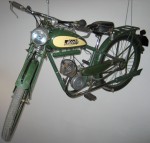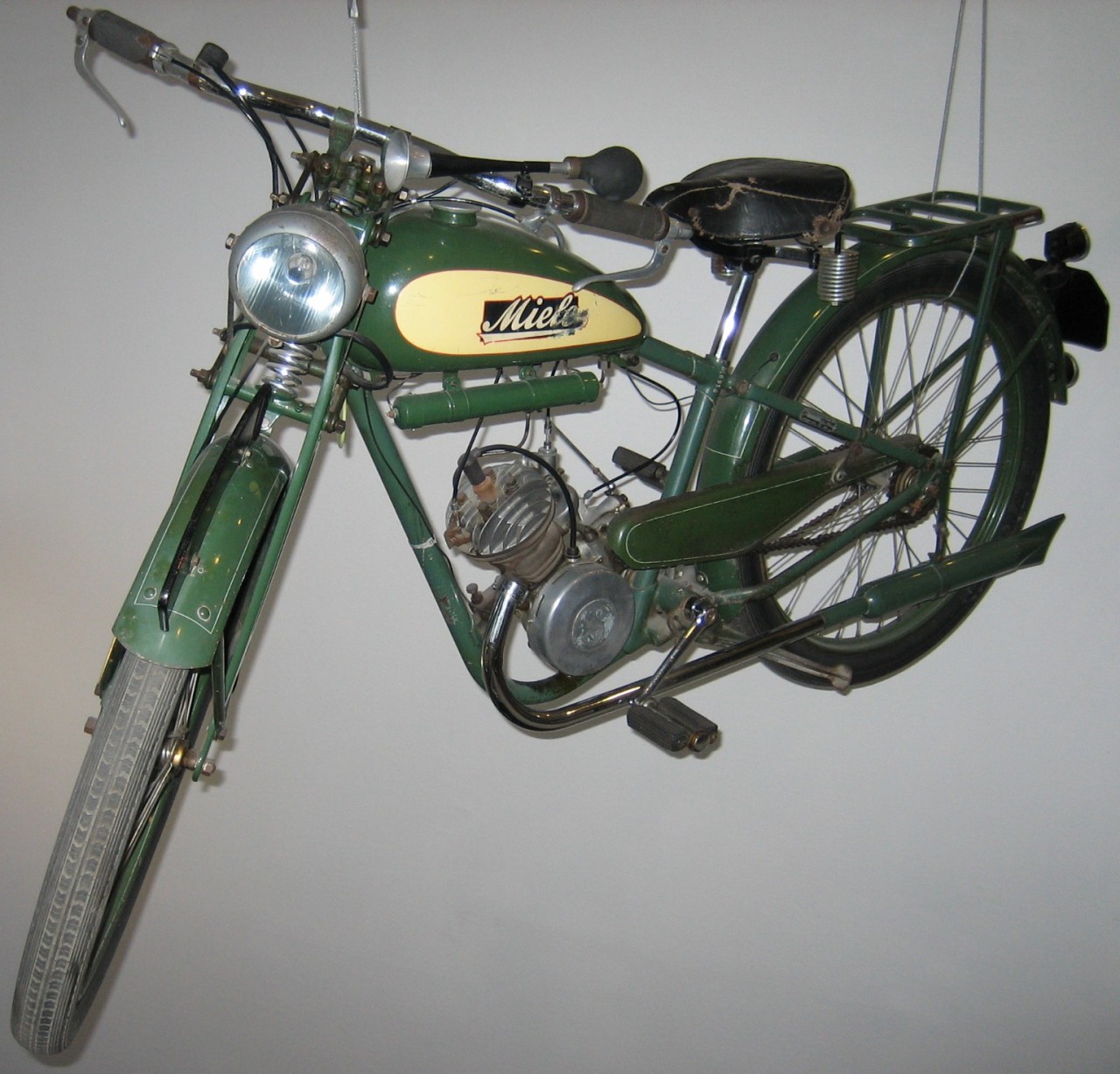On Saturday I visited the Miele Experience Centre in Abingdon, which coincided nicely with a trip to Reading to see a friend. The purpose of the centre is to showcase the company’s products, which are mostly homecare products, but some are also sold into industry (dishwashers and suchlike). It serves to educate owners of Miele products how to get the most from them and show prospective customers what’s available. They also have other cooking masterclasses, of interest to people that would like to learn how to improve their cookery skills and for groups who are not confident in the kitchen.
 I was interested to learn about some of the history of the company, since branding (especially cool and quality brands) was the topic of my dissertation. The heritage of the company goes back a long way; it being an innovator in a number of product areas since it was founded in 1899. Some of these, including an old pushbike, a moped and 1950s vacuum cleaner were hoisted in homage to its past in the stairwells. I was encouraged to learn that one of the statements Miele makes about its product testing process is that “Nothing is new; everything is used”. This means each and every product is tested, rather than just batch testing, where only two in each 100 products may be tested.
I was interested to learn about some of the history of the company, since branding (especially cool and quality brands) was the topic of my dissertation. The heritage of the company goes back a long way; it being an innovator in a number of product areas since it was founded in 1899. Some of these, including an old pushbike, a moped and 1950s vacuum cleaner were hoisted in homage to its past in the stairwells. I was encouraged to learn that one of the statements Miele makes about its product testing process is that “Nothing is new; everything is used”. This means each and every product is tested, rather than just batch testing, where only two in each 100 products may be tested.
Even more enjoyable was learning more about food and meeting the other bloggers at the event. These included Susanna, a mummy blogger at A Moden Mother (who wrote about the experience here) and other foodies Bronwyn (Feast with Bron), Mimi (MeeMalee’s Kitchen), Carla (Can Be Bribed With Food), Jennifer (Chocolate Ecstasy) and Anne (Anne’s Kitchen).
We started off with a talk about coffee, which – following my Norwegian holiday – I was keen to expand my knowledge about. I learnt a few new things including:
- That coffee comes from two varieties of bean: Arabica and Robusta. Arabica is considered better quality and is more consequently more expensive. Robusta, as you can guess from the name has a more robust flavour. Most varieties of coffee will have a mixture of each type of bean to balance smooth, strength and price (good blog about coffee and including a post on the two beans here)
- The high caffeine content of coffee comes from the length of exposure to the coffee grounds, so while one would imagine that an espresso might have the greater caffeine strength, it’s actually percolated or cafetiere coffee which is the ‘stronger’ hit. As an obvious result, finer coffee delivers more caffeine strength due to its greater surface area
- What surprised me slightly was discovering the rate at which coffee loses its freshness. I knew that the second you open coffee it degrades, but in a test, we smelt coffee that had been open an hour against just-popped sachets and the difference was significant
Once we had the talk on coffee, we did some cooking and my group, which included Susanna and Cherry from Miele’s agency, cooked an asparagus flan, a creamy mushroom penne and Malaysian tiger prawns. Other groups cooked things like chicken, kedgeree, stir-fry and roast beef, after which we all enjoyed the fruits of our labour in a buffet lunch. It was fascinating to use a steam oven for the first time and use a teppan grill to cook the prawns.
To round things off nicely, I also picked up one of those little anecdotal nuggets from a fellow blogger (ta, Bron) about the best way to peel ginger (using a spoon). I was great to chat with fellow enthusiasts and share recommendations – hopefully I’ll catch up with you all at future events ☺

I was fascinated by the coffee bit too. Am now using a coffee press to make sure I get max cafeine!
Meanwhile, I’m going to chug away on my espressos, safe in the knowledge that they’re not nearly as bad as the cafetieres which make my hands shake!
Myself I want the steam combination oven… Nice to meet you too – and glad you’re as taken as I was when someone showed me the ginger peeled with a spoon trick.
Was great to talk and meet you on Saturday, agree in comments re: ginger, Bron you are a genius 🙂
Can I come with you next time you do this? Sounds fab!